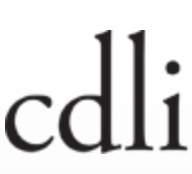The Cuneiform Digital Library Initiative (CDLI), a cooperation with the Department of Near Eastern Languages and Cultures of the University of California at Los Angeles (UCLA) and the University of Oxford, represents the efforts of an international group of Assyriologists, museum curators, and historians of science to make available online the form and content of cuneiform inscriptions dating from the beginning of writing, ca. 3350 BC, until the end of the pre-Christian era.
More than 230,000 of the estimated more than 500,000 excavated tablets distributed over museums and archives of the whole world have currently been cataloged. For most of them standardized transliterations are provided, complemented by about 75,000 images (scans, scanned copies, or photos). Considerable efforts are presently being made to improve the searching facilities for retrieving the data.
The CDLI acquired a major grant from the Andrew Mellon Foundation in the United States to fund the digitization of major collections in Europe and the US: University of Pennsylvania Museum, British Museum, as well as Syrian collections, and smaller collections in the US and Europe (e.g., Leiden). The Electronic Text Corpus of Sumerian Literature (ETCSL) provides an online searchable corpus of about 400 compositions of "classical" Sumerian literature, with bibliographies and English translations. The data is now being integrated into the CDLI dataset. A database to complement the CDLI datasets with data about physical seals, seal impressions, and composite reconstructions of the complete seal motifs has been created. Work has also been undertaken on the Liagre Böhl collection, housed at The Netherlands Institute for the Near East (NINO) in Leiden.
Furthermore, work in Syria in the context of the Syrian Digital Library of Cuneiform project (SDLC) has been carried out. In cooperation with the SCLC, an interactive Arabic/English/French presentation of a rich and indigenous cuneiform tradition dating back five millennia is in preparation. The cuneiform tablet collections kept in the museums of Damascus, Aleppo, Deir ez-Zor, Raqqa, Lattakia, Idlib and Homs, originate from close to 30 different archeological sites. In the summer of 2009, about 800 cuneiform tablets were digitized and catalogued from the archaeological sites of Tuttul (Tell Bi‚ Äôa) and Tell Beydar, housed in the archeological museums of Raqqa and Deir ez Zor respectively. These digitized images will shortly be freely available online. In the frame of the CDLI project, research was carried out on year names in the period of the third dynasty of Ur and on administrative documents of the excavated archive of the city of Ebla.

